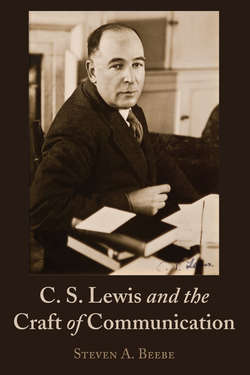Читать книгу C. S. Lewis and the Craft of Communication - Steven Beebe - Страница 30
На сайте Литреса книга снята с продажи.
Boarding Schools
ОглавлениеThe worst was to be first. Following his mother’s death in August 1908, Jack was sent to Wynyard School, in Watford, Hertfordshire, England. Because Warnie was already attending Wynyard, it seemed the logical choice. But it was a bad choice. Wynyard was a dreadful school. The headmaster, Rev. Robert Capron (whom the boys nicknamed “Oldie”) would sometimes mercilessly beat students for being unprepared.41 Capron was later declared insane. Jack’s educational experience became even more unpleasant when, after his first year, he felt abandoned by his brother; Warnie left Wynyard to attend school in Malvern. After much pleading, Jack convinced his father to let him come home. Albert acquiesced and placed Jack in Campbell College, a fifteen-minute walk from the Lewis home in Belfast. Yet that brief matriculation may have helped shape Lewis’s love of language. Lewis biographer Alan Jacobs noted that when enrolled at Campbell ←41 | 42→College, even for the one semester, “Jack became acquainted, perhaps for the first time, with the power of poetic language, especially the rhythm and propulsion it can give to a story.”42
After only about three months at Campbell, Jack enrolled in Cherbourg House in Malvern, England, in January of 1911. One benefit of Cherbourg House was its being almost next door to Malvern College, where Warnie was now a pupil. Jack demonstrated promise at Cherbourg House, which was the first place where he received a consistent and proper formal education.
Jack Lewis joined his brother at Malvern College in the summer of 1913 to prepare for taking the entrance exams for university. In later years, Jack and Warnie agreed to disagree about the educational quality at Malvern College. Warnie thought that the education was quite good, but Jack was less impressed. The different recollections may have been due to their differing levels of enjoyment of athletic events. As in many boarding schools, to be part of the accepted social circle, participating in college sports teams was a must. For Jack it was a must not. While Warnie enjoyed sports, Jack did not like sports or most games. But he did like speaking and oral reading.
Friend and biographer George Sayer reports that as an adult, Lewis enjoyed good animated conversations. “How I like talking!”43 Sayer quotes Lewis as saying. This love for communication was nurtured at Malvern, where he found a role model in, and received direct instruction from, influential teacher Harry Wakelyn Smith, affectionately dubbed “Smewgy” by his students. Smewgy had a considerable dramatic flair for reading poetry. In him, Jack found someone who would develop his interest in words, language, and even performance. Smewgy taught Lewis two key communication skills: first, to analyze the grammar and syntax of a poem, and second, to read poetry with a focus on the sounds and rhythms of the poem. Sayer adds, “Although he [Lewis] did not have Smewgy’s lovely musical voice and could not read romantic poetry with Smewgy’s power to enchant, Jack excelled in reading heroic verse and such poetry as Milton’s that required a grand style.”44 Lewis biographer Harry Poe, who also noted the importance of Lewis’s love of poetry in shaping his writing “voice” noted, “Jack was learning not merely to read the lines of poetry but also to hear them ringing in his ears even when reading silently.”45
Lewis’s talent for holding an audience with his speaking perhaps began with Smewgy’s attention to not only the substance of a message, but also its sound. It was also at Malvern where Lewis developed a keen interest in Northernness—his fascination with Norse mythology. In addition to Norse mythology, Lewis was captivated by the Arthur Rackham illustrations of Wagner’s opera Der Ring des Nibelungen, inspiring a life-long love of Wagner’s music.
←42 | 43→
